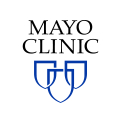Ablation of Intestinal Metaplasia Containing Dysplasia
| Status: | Completed |
|---|---|
| Conditions: | Gastrointestinal |
| Therapuetic Areas: | Gastroenterology |
| Healthy: | No |
| Age Range: | 18 - 80 |
| Updated: | 11/8/2017 |
| Start Date: | February 2006 |
| End Date: | August 2014 |
Ablation of Intestinal Metaplasia Containing Dysplasia (AIM Dysplasia Trial) A Multi-center, Randomized, Sham-Controlled Trial: Protocol Amendment to Extend Follow-up to 5 Years
The purpose of this study is to determine if the intervention of a 510(k)-cleared
endoscopically-guided (Halo Ablation systems), ablation system plus anti-secretory therapy is
better than anti-secretory therapy alone in clearing Barrett's Esophagus.
endoscopically-guided (Halo Ablation systems), ablation system plus anti-secretory therapy is
better than anti-secretory therapy alone in clearing Barrett's Esophagus.
Barrett's esophagus or intestinal metaplasia (IM) is a change in the epithelial lining of the
esophagus. Barrett's esophagus develops as a result of chronic exposure of the esophagus to
refluxed stomach acid and enzymes, as well as bile, resulting in recurrent mucosal injury.
Injury is accompanied by inflammation and, ultimately, a cellular change (metaplasia) to a
specialized columnar epithelium (Spechler SJ. Barrett's Esophagus. N Engl J Med
2002;346(11):836-842.)
Patients who have a diagnosis of Barrett's esophagus typically undergo surveillance endoscopy
every 1-3 years with multiple biopsy specimens obtained to facilitate early detection of
progression of IM to dysplasia (more severe precancerous changes) and adenocarcinoma.
(Sampliner RE. Updated guidelines for the diagnosis, surveillance, and therapy of Barrett's
esophagus. Am J Gastro 2002;97:1888-1895.) Progression of IM to low-grade dysplasia (LGD)
indicates that cells exhibit more "cancer-like" architecture, thus warranting an accelerated
surveillance endoscopy and biopsy program every 6 months rather than every 1-3 years as
indicated for non-dysplastic IM. Progression to high-grade dysplasia (HGD) indicates that the
cells are even more "cancer-like", thus warranting an even higher frequency surveillance
endoscopy and biopsy program (every 3 months). Many HGD patients may undergo photodynamic
therapy (PDT) or surgical esophagectomy, rather than remain in a frequent surveillance
program. This more aggressive therapy is warranted because of the high rate of progression of
HGD to adenocarcinoma.
Esophageal adenocarcinoma most commonly occurs after an insidious progression from IM to LGD
to HGD. Therefore, surveillance is increased upon diagnosis of worsening grades of dysplasia.
The incidence of esophageal adenocarcinoma is rapidly increasing as middle-aged and elderly
demographic sub-groups expand (Peters JH, Hagen JA, DeMeester SR. Barrett's Esophagus. J
Gastrointest Surg 2004;8(1):1-17.) In 2004, the American Cancer Society reported that there
were 14,250 new cases of esophageal cancer, and 13,300 deaths attributable to esophageal
cancer (www.cancer.org). The U.S. National Cancer Institute Surveillance, Epidemiology and
End Results Program reported that the increasing incidence of esophageal adenocarcinoma was
greater than for any other cancer in the United States (www.cancer.gov).
Elimination of the diseased epithelium containing IM with dysplasia is an intuitively
favorable step for patients with this diagnosis. In other disease states, such as colon
polyps or premalignant skin lesions, removal of the premalignant tissue results in a
reduction in the risk of ultimately developing cancer. This is a logical conclusion when
considering the premalignant lesion of Barrett's esophagus (particularly Barrett's esophagus
with dysplasia), as the "tissue at risk" can be completely removed by ablation. This premise
has been tested in the Barrett's dysplasia population in photoablative trials using PDT for
patients with HGD, where PDT imparted a 50% reduction in risk over controls for the
development of adenocarcinoma (Overholt BF, Panjehpour M, Haydek JM. Photodynamic therapy for
Barrett's esophagus: follow-up. Gastrointest Endosc 1999;49(1):1-7.) The AIM Dysplasia Trial
primary endpoints are removal of all dysplasia and IM, rather than detection of a difference
in progression to adenocarcinoma or higher grades of dysplasia.
esophagus. Barrett's esophagus develops as a result of chronic exposure of the esophagus to
refluxed stomach acid and enzymes, as well as bile, resulting in recurrent mucosal injury.
Injury is accompanied by inflammation and, ultimately, a cellular change (metaplasia) to a
specialized columnar epithelium (Spechler SJ. Barrett's Esophagus. N Engl J Med
2002;346(11):836-842.)
Patients who have a diagnosis of Barrett's esophagus typically undergo surveillance endoscopy
every 1-3 years with multiple biopsy specimens obtained to facilitate early detection of
progression of IM to dysplasia (more severe precancerous changes) and adenocarcinoma.
(Sampliner RE. Updated guidelines for the diagnosis, surveillance, and therapy of Barrett's
esophagus. Am J Gastro 2002;97:1888-1895.) Progression of IM to low-grade dysplasia (LGD)
indicates that cells exhibit more "cancer-like" architecture, thus warranting an accelerated
surveillance endoscopy and biopsy program every 6 months rather than every 1-3 years as
indicated for non-dysplastic IM. Progression to high-grade dysplasia (HGD) indicates that the
cells are even more "cancer-like", thus warranting an even higher frequency surveillance
endoscopy and biopsy program (every 3 months). Many HGD patients may undergo photodynamic
therapy (PDT) or surgical esophagectomy, rather than remain in a frequent surveillance
program. This more aggressive therapy is warranted because of the high rate of progression of
HGD to adenocarcinoma.
Esophageal adenocarcinoma most commonly occurs after an insidious progression from IM to LGD
to HGD. Therefore, surveillance is increased upon diagnosis of worsening grades of dysplasia.
The incidence of esophageal adenocarcinoma is rapidly increasing as middle-aged and elderly
demographic sub-groups expand (Peters JH, Hagen JA, DeMeester SR. Barrett's Esophagus. J
Gastrointest Surg 2004;8(1):1-17.) In 2004, the American Cancer Society reported that there
were 14,250 new cases of esophageal cancer, and 13,300 deaths attributable to esophageal
cancer (www.cancer.org). The U.S. National Cancer Institute Surveillance, Epidemiology and
End Results Program reported that the increasing incidence of esophageal adenocarcinoma was
greater than for any other cancer in the United States (www.cancer.gov).
Elimination of the diseased epithelium containing IM with dysplasia is an intuitively
favorable step for patients with this diagnosis. In other disease states, such as colon
polyps or premalignant skin lesions, removal of the premalignant tissue results in a
reduction in the risk of ultimately developing cancer. This is a logical conclusion when
considering the premalignant lesion of Barrett's esophagus (particularly Barrett's esophagus
with dysplasia), as the "tissue at risk" can be completely removed by ablation. This premise
has been tested in the Barrett's dysplasia population in photoablative trials using PDT for
patients with HGD, where PDT imparted a 50% reduction in risk over controls for the
development of adenocarcinoma (Overholt BF, Panjehpour M, Haydek JM. Photodynamic therapy for
Barrett's esophagus: follow-up. Gastrointest Endosc 1999;49(1):1-7.) The AIM Dysplasia Trial
primary endpoints are removal of all dysplasia and IM, rather than detection of a difference
in progression to adenocarcinoma or higher grades of dysplasia.
Inclusion Criteria:1.Subject is 18-80 years of age, inclusive. 2.Subject has documented
diagnosis of IM, maximum endoscopic length of 8 cm (as measured endoscopically from the TGF
to the most proximal extent of the IM; i.e. TGF-TIM containing dysplasia as follows:
1. For LGD:i.LGD documented on biopsy within previous 12 months from enrollment while
subject on PPI therapy.
ii.Histology slides reviewed at central pathology service for trial confirm LGD on
first confirmatory central pathology review or, if necessary, confirm LGD on a
tie-breaker review by a second pathologist.
2. For HGD:i.Regular, non-nodular, non-ulcerated mucosa. ii.HGD documented on biopsy
within previous 6 months from enrollment. iii.Histology slides reviewed at central
pathology service for Trial confirm HGD on first confirmatory review or, if necessary,
confirm HGD on a tie-breaker review by a second pathologist.
iv.Baseline EUS within previous 12 months; 1.Catheter-based EUS excludes suspicious
thickened Barrett's areas or, if suspicious areas found, prompts stacked biopsies of
thickened area, the results of which do not render subject ineligible for enrollment.
3.For subjects with EMR history,the documented diagnosis of IM with dysplasia meets
criterion #2 from biopsies collected either after the EMR procedure or during the EMR
procedure but not from the EMR site.
4.Subject able to take oral proton pump inhibitor medication. 5.Subject able to
discontinue aspirin and/or non-steroidal anti-inflammatory medications 7 days before
and after all ablation procedures.
6.For female subjects of childbearing potential, a negative pregnancy test within 2
weeks of randomization.
7.Subject eligible for treatment and follow-up endoscopy and biopsy as required by the
Protocol.
8.Subject willing to provide written, informed consent to participate in this clinical
study and understands the responsibilities of trial participation.
Exclusion Criteria:1.The subject is pregnant or planning a pregnancy during the study
period.
2.Esophageal stricture preventing passage of endoscope or catheter. 3.Active
esophagitis described as erosions or ulcerations encompassing more than 10% of distal
esophagus.
4.Any history of malignancy of the esophagus. 5.Prior radiation therapy to the
esophagus,except head and neck region radiation therapy.
6.Any previous ablative therapy within the esophagus (PDT, MPEC, APC, laser treatment,
other).
7.History of EMR that meets any of the following criteria:a.EMR performed less than 8
weeks prior to the randomization endoscopy encounter
b.EMR performed in a wide field manner (encompassing more than 90 degrees of any area of
the esophagus.
8.Any previous esophageal surgery, including except fundoplication without complications
(i.e. no slippage, dysphagia, etc).
9.Evidence of esophageal varices during treatment endoscopy. 10.Report of uncontrolled
coagulopathy with international normalized ratio (INR) > 1.3 or platelet count <75,000
platelets per µL 11.Subject has a life-expectancy of less than two years due to an
underlying medical condition.
12.Subject has a known history of unresolved drug or alcohol dependency that would limit
ability to comprehend or follow instructions related to informed consent, post-treatment
instructions, or follow-up guidelines.
13.Subject has an implantable pacing device (examples; AICD, neurostimulator, cardiac
pacemaker)and has not received clearance for enrollment in this study by specialist
responsible for the pacing device.
14.The subject is currently enrolled in an investigational drug or device trial that
clinically interferes with the AIM Dysplasia Trial endpoints.
15.Subject suffers from psychiatric or other illness deemed by the investigator as an
inability to comply with protocol.
For the 5 year extension, patient must have:1. Enrolled in the B-204 protocol. 2. Completed
1 year follow-up. 3. Completed 2 year follow-up.
We found this trial at
19
sites
Click here to add this to my saved trials
Cleveland Clinic Cleveland Clinic is committed to principles as presented in the United Nations Global...
Click here to add this to my saved trials
Click here to add this to my saved trials
171 Ashley Avenue
Charleston, South Carolina 29425
Charleston, South Carolina 29425
843-792-1414

Medical University of South Carolina The Medical University of South Carolina (MUSC) has grown from...
Click here to add this to my saved trials
University Hospitals of Cleveland The history of University Hospitals Case Medical Center is linked to...
Click here to add this to my saved trials
Click here to add this to my saved trials
Kansas City, Missouri 64128
Click here to add this to my saved trials
Click here to add this to my saved trials
Dartmouth Hitchcock Medical Center Dartmouth-Hitchcock is a national leader in patient-centered health care and building...
Click here to add this to my saved trials
Columbia University Medical Center Situated on a 20-acre campus in Northern Manhattan and accounting for...
Click here to add this to my saved trials
Click here to add this to my saved trials
Thomas Jefferson University We are dedicated to the health sciences and committed to educating professionals,...
Click here to add this to my saved trials
Click here to add this to my saved trials
Mayo Clinic Rochester Mayo Clinic is a nonprofit worldwide leader in medical care, research and...
Click here to add this to my saved trials
660 S Euclid Ave
Saint Louis, Missouri 63110
Saint Louis, Missouri 63110
(314) 362-5000

Washington University School of Medicine Washington University Physicians is the clinical practice of the School...
Click here to add this to my saved trials
Mayo Clinic Scottsdale Mayo Clinic Arizona was the second Mayo practice to be established outside...
Click here to add this to my saved trials
Click here to add this to my saved trials
Click here to add this to my saved trials






